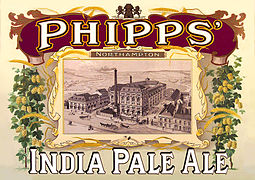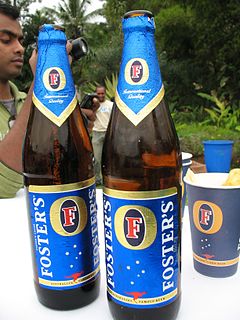
Foster's Lager is an internationally-distributed brand of lager. It is owned by the international brewing group Asahi Group Holdings., and is brewed under licence in a number of countries, including its biggest market, the UK, where the European rights to the brand are owned by Heineken International.

Stout is a dark, top-fermented beer with a number of variations, including dry stout, oatmeal stout, milk stout, and imperial stout.

Marston's plc is a British pub and hotel operator. It was known as Wolverhampton & Dudley Breweries plc until 2007 when it was rebranded as Marston's. It is listed on the London Stock Exchange. Marston's disposed of its brewing operations in 2020, selling the assets to a newly formed joint venture with the Carlsberg Group to create the Carlsberg Marston's Brewing Company (CMBC). Marston's plc have a 40% shareholding in CMBC.

Old ale is a form of strong ale. The term is commonly applied to dark, malty beers in England, generally above 5% ABV, and also to dark ales of any strength in Australia. It is sometimes associated with stock ale or, archaically, keeping ale, in which the beer is held at the brewery. In modern times, the line has blurred between Old Ale and Barley wine.

India pale ale (IPA) is a hoppy beer style within the broader category of pale ale.
Webster's Brewery was a brewery that was founded in 1838 by Samuel Webster and operated at the Fountain Head Brewery in Halifax, West Riding of Yorkshire, England. Webster's Green Label, a light mild, and Yorkshire Bitter gained national distribution after the company was taken over by Watney Mann in 1972. Throughout the 1970s it was known for the advertising slogan: "Drives out the northern thirst".
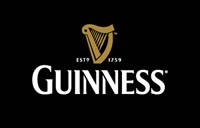
St. James's Gate Brewery is a brewery founded in 1759 in Dublin, Ireland, by Arthur Guinness. The company is now a part of Diageo, a British company formed from the merger of Guinness and Grand Metropolitan in 1997. The main product of the brewery is Guinness Draught.

Beer in England has been brewed for hundreds of years. As a beer brewing country, England is known for its top fermented cask beer which finishes maturing in the cellar of the pub rather than at the brewery and is served with only natural carbonation.
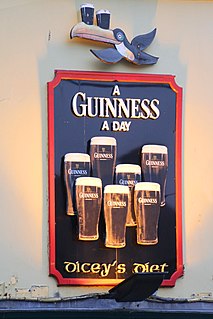
Brewing in Ireland has a long history. Production currently stands at over 8 million hectolitres, and approximately half the alcohol consumed is beer.

Beer is the most popular alcoholic drink in New Zealand, accounting for 63% of available alcohol for sale. At around 64.7 litres per person per annum, New Zealand is ranked 27th in global beer consumption per capita. The vast majority of beer produced in New Zealand is a type of lager, either pale or amber in colour, and typically 4–5% alcohol by volume.

The beer market in Denmark is dominated by the brands Carlsberg and Tuborg. Since Tuborg was acquired by Carlsberg in 1970, Carlsberg has held a near-monopoly. A number of regional breweries, however, managed to survive, and most of them merged into Royal Unibrew in 2005. As of 2020, Ratebeer lists over 300 active breweries in Denmark, most of which are microbreweries.

Belhaven Brewery is a brewery based in Belhaven, Scotland. The brewery dates from 1719, at least; by 2005 it had become the largest and oldest surviving independent brewery in Scotland. In November 2005, the Suffolk based brewery Greene King completed a £187 million takeover of the company. The brewery complex is designated Category A listed.

Jennings Brewery was established as a family concern in 1828 in the village of Lorton, between Buttermere and Cockermouth in the Lake District, England. The brewery was started by John Jennings Snr, son of William Jennings. Jennings brewed exclusively in Lorton until 1874 when its present home, the Castle Brewery in Cockermouth, was purchased. The Lorton brewery closed some five years later.
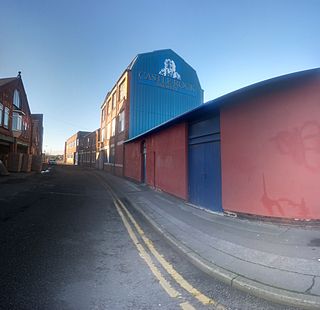
Castle Rock Brewery is a brewery and pub group based in Nottingham, Nottinghamshire. It was originally set up as a joint venture with Bramcote Brewery. Bramcote Brewery was wound up and a new company was set up, 50% owned by Tynemill and 50% owned by the previous owners of Bramcote Brewery, on a new site next to Tynemill’s pub, The Vat and Fiddle, located on Queensbridge road close to Nottingham railway station. The Vat and Fiddle became the ‘Brewery Tap’, serving over 10 real ales at any one time, several of which are Castle Rock's.

Watney Combe & Reid was a leading brewery in London. At its peak in the 1930s it was a constituent of the FT 30 index of leading companies on the London Stock Exchange. It produced Watney's Red Barrel.

Ushers of Trowbridge was a brewery in Trowbridge, Wiltshire, England, between 1824 and 2000.

Pickering Phipps is the name of three related men – father, grandson and great grandson – who were residents of Northampton, England in the 19th and 20th centuries. The first began the Phipps Brewery in Towcester in 1801. The company survives today as Phipps NBC.
Truman's Brewery was a large East London brewery and one of the largest brewers in the world at the end of the 19th century. Founded around 1666, the Black Eagle Brewery was established on a plot of land next to what is now Brick Lane in London, E1. It grew steadily until the 18th century when, under the management of Benjamin Truman, and driven by the demand for porter, it expanded rapidly and became one of the largest brewers in London. Its growth continued into and through the 19th century with the expansion of its brewery and pub estate. In 1873, it purchased Philips Brewery in Burton and became the largest brewery in the world.

Beer has been produced in Scotland for about 5,000 years. The Celtic tradition of using bittering herbs remained in Scotland longer than in the rest of Europe. Most breweries developed in the central Lowlands, which also contained the main centres of population. Edinburgh and Alloa in particular became noted centres for the export of beer around the world. By the end of the 20th century, small breweries had sprung up all over Scotland.

Porter is a style of beer that was developed in London, England, in the early 18th century. It was well-hopped and dark in appearance owing to the use of brown malt. The name originated from its popularity with street and river porters.

